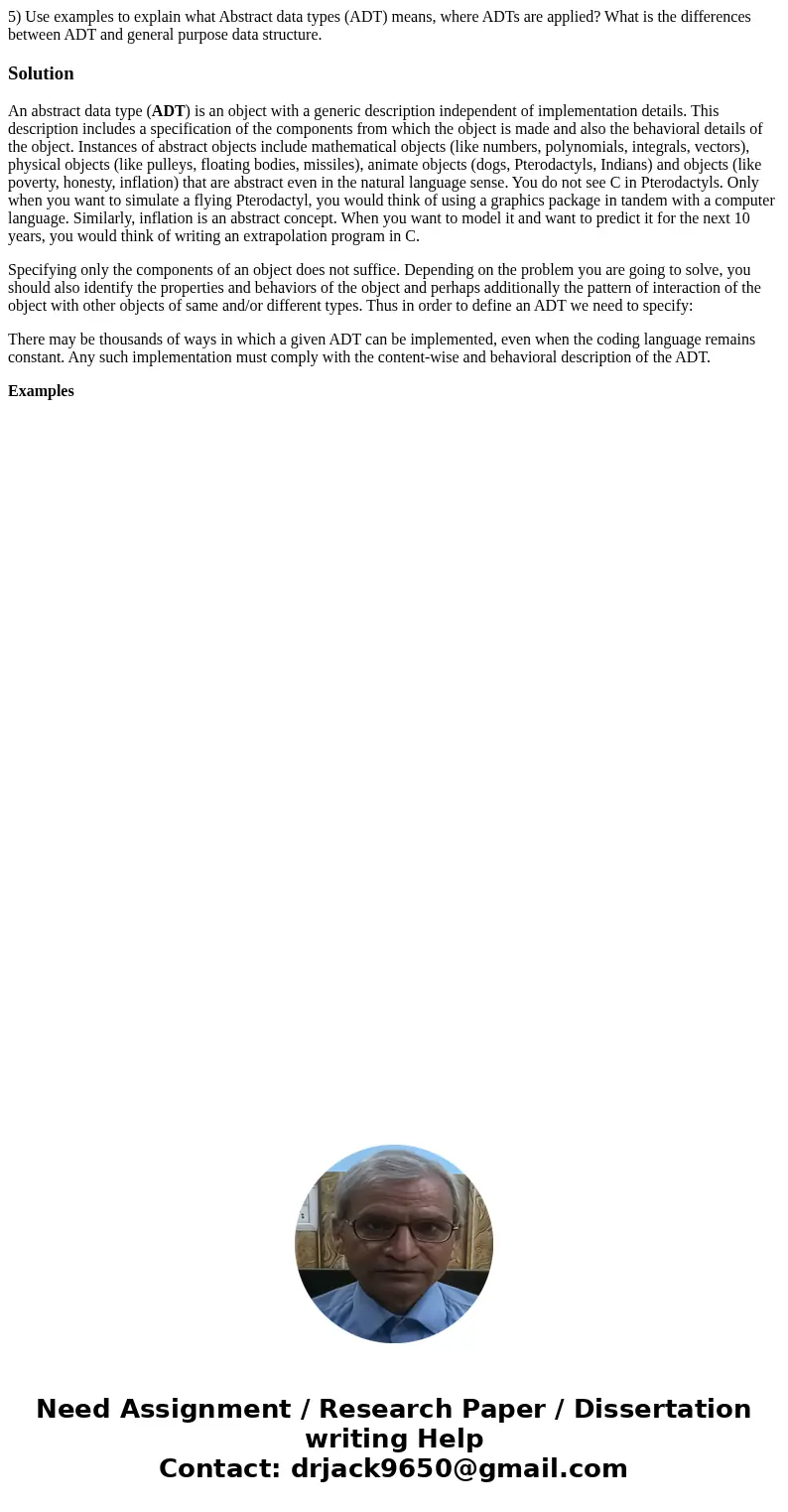5 Use examples to explain what Abstract data types ADT means
5) Use examples to explain what Abstract data types (ADT) means, where ADTs are applied? What is the differences between ADT and general purpose data structure.
Solution
An abstract data type (ADT) is an object with a generic description independent of implementation details. This description includes a specification of the components from which the object is made and also the behavioral details of the object. Instances of abstract objects include mathematical objects (like numbers, polynomials, integrals, vectors), physical objects (like pulleys, floating bodies, missiles), animate objects (dogs, Pterodactyls, Indians) and objects (like poverty, honesty, inflation) that are abstract even in the natural language sense. You do not see C in Pterodactyls. Only when you want to simulate a flying Pterodactyl, you would think of using a graphics package in tandem with a computer language. Similarly, inflation is an abstract concept. When you want to model it and want to predict it for the next 10 years, you would think of writing an extrapolation program in C.
Specifying only the components of an object does not suffice. Depending on the problem you are going to solve, you should also identify the properties and behaviors of the object and perhaps additionally the pattern of interaction of the object with other objects of same and/or different types. Thus in order to define an ADT we need to specify:
There may be thousands of ways in which a given ADT can be implemented, even when the coding language remains constant. Any such implementation must comply with the content-wise and behavioral description of the ADT.
Examples

 Homework Sourse
Homework Sourse